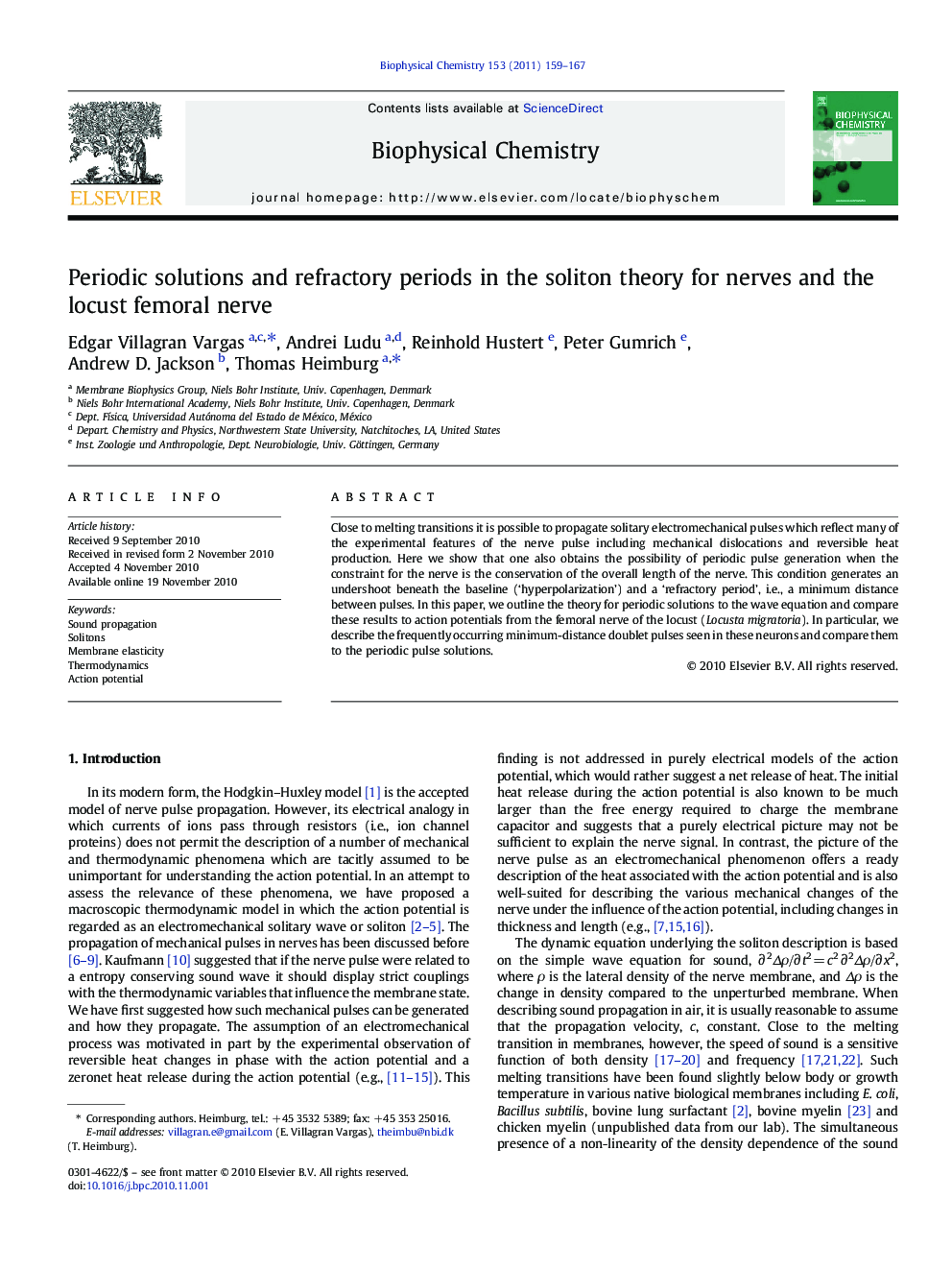| Article ID | Journal | Published Year | Pages | File Type |
|---|---|---|---|---|
| 5371515 | Biophysical Chemistry | 2011 | 9 Pages |
Close to melting transitions it is possible to propagate solitary electromechanical pulses which reflect many of the experimental features of the nerve pulse including mechanical dislocations and reversible heat production. Here we show that one also obtains the possibility of periodic pulse generation when the constraint for the nerve is the conservation of the overall length of the nerve. This condition generates an undershoot beneath the baseline ('hyperpolarization') and a 'refractory period', i.e., a minimum distance between pulses. In this paper, we outline the theory for periodic solutions to the wave equation and compare these results to action potentials from the femoral nerve of the locust (Locusta migratoria). In particular, we describe the frequently occurring minimum-distance doublet pulses seen in these neurons and compare them to the periodic pulse solutions.
Graphical AbstractDownload full-size imageResearch Highlights⺠Close to melting transitions in lipid membranes mechanical pulses can propagate. ⺠Pulses display minimal distances of several pulse widths due to mass conservation. ⺠During pulses one finds forces, thickness changes and no heat dissipation. ⺠The action potentials in nerves share the above features. ⺠Locust nerves display doublets of pulses with distances of the above order.
